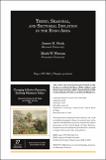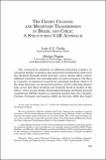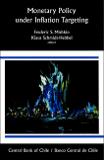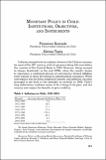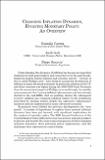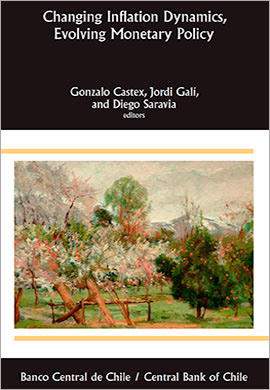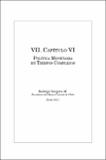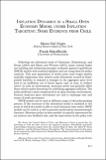Buscar
Mostrando ítems 11-20 de 46
Trend, seasonal, and sectorial inflation in the Euro Area
A central focus of monetary policy is the underlying rate of inflation
that might be expected to prevail over a horizon of one or two years.
Because inflation is estimated from noisy data, the estimation of
this underlying rate of inflation, which we refer to as trend inflation,
requires statistical ...
Fiscal inflation and cosmetic defaults in a small open economy
For a small open economy, maintaining a stable exchange rate and moderate levels of inflation is often a goal of primary importance. At the same time, the profession has recognized the tight link between fiscal and monetary policies in determining inflation dynamics. Thus, the goal of a stable exchange ...
Inflation targeting under political pressure
Historically, many emerging economies, particularly in Latin America, battled against persistently high and volatile inflation. Today, emerging economies continue to experience higher inflation than developed ones, and their central banks deviate more frequently from inflation targets. These patterns ...
The credit channel and monetary transmission in Brazil and Chile: a structured VAR approach
The widespread adoption of inflation-targeting regimes by emerging market economies has generated considerable interest in the channels through which monetary policy shocks affect output inflation and other relevant aggregates in such economies. Yet there is a paucity of empirical research for emerging ...
Monetary policy under inflation targeting
Inflation targeting cum exchange-rate floating has become the framework of choice in countries pursuing an independent and effective monetary policy. Since its adoption by New Zealand (1990) and Chile (1991), central banks of nearly 25 industrial and emerging economies have implemented an explicit ...
Monetary policy in Chile: institutions objectives and instruments
Inflation seemed to be an endemic disease of the Chilean economy for most of the 20th century with its presence being felt even before the creation of the Central Bank in 1925. However things seemed to change drastically in the mid 1990s when the country began to experience a sustained process of ...
Changing inflation dynamics, evolving monetary policy: an overview
Understanding the dynamics of inflation has become an important
challenge for both policymakers and researchers over the past decade.
Empirical models linking inflation and economic activity—versions of
the so-called Phillips curve—have failed to account for the behavior of
inflation in many ...
Changing inflation dynamics, evolving monetary policy
Empirical models have failed to explain inflation behavior over the last 20 years in most developed economies. The unusual inflation dynamics—the ‘missing deflation’ during recessions and the ‘missing inflation’ during recoveries—points to a failure of Phillips curve predictions. Several hypotheses ...
Política monetaria en tiempos complejos
Durante los últimos años la economía chilena ha sufrido shocks importantes que han implicado un gran desafío para la conducción de la política monetaria. El fin del súper ciclo de las materias primas y condiciones financieras internacionales más estrechas junto con una caída importante en los niveles ...
Inflation dynamics in a small open economy model under inflation targeting: some evidence from Chile
Following the influential work of Christiano, Eichenbaum, and Evans (2005) and Smets and Wouters (2003), many central banks are building and estimating dynamic stochastic general equilibrium (DSGE) models with nominal rigidities and are using them for policy analysis. This new generation of sticky ...

